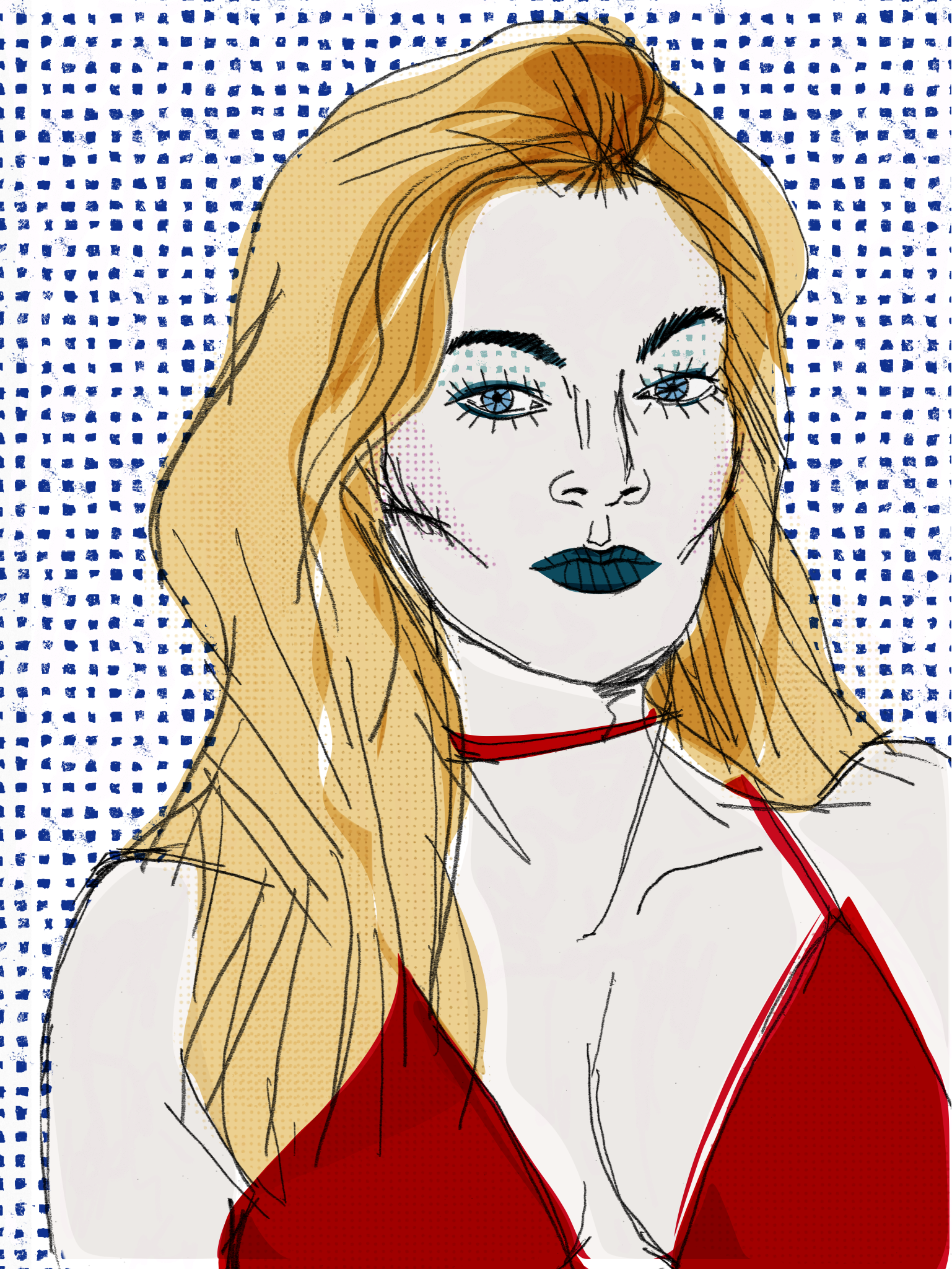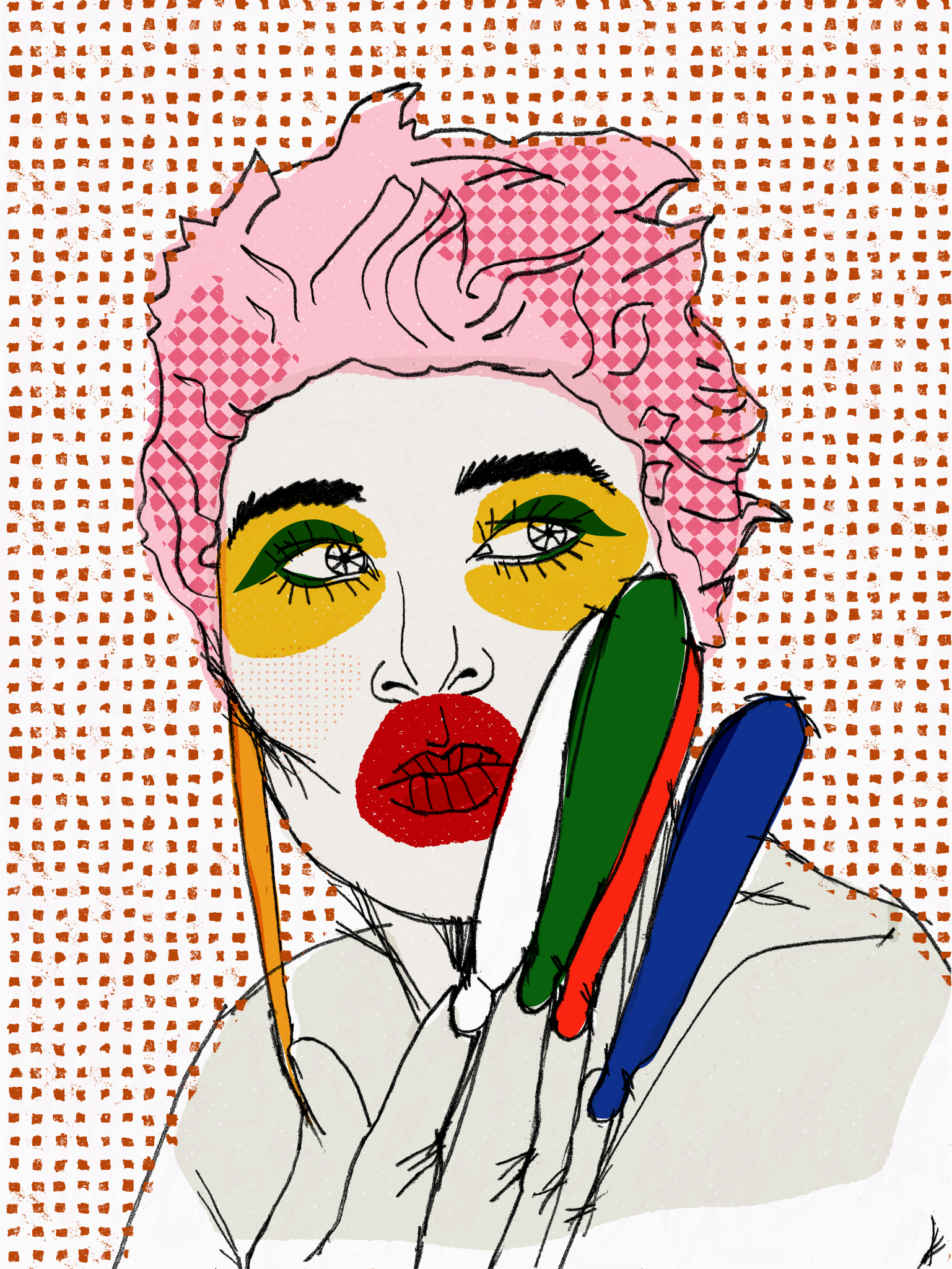Cookie Mueller by Amelia Abraham
Illustration by Constantin Prozorov
Amelia Abraham (b. 1991) is a journalist from London. Having worked as a commissioning editor at VICE and Refinery29, she is now writing freelance and working on her first book for Picador. Her main interest is LGBTQ culture and identity politics, and she has written for The Guardian, The Observer, The Independent, The Sunday Times, The New Statesman, ES Magazine, VICE, i-D magazine and Dazed & Confused.
Dorothy Karen "Cookie" Mueller (March 2, 1949 – November 10, 1989) was an author, actress, and photographer Nan Goldin's muse...
It’s hard to remember the first time I found out who Cookie Mueller was, because she crops up across the annals of American counter culture all over– as a writer, as an actress and as the most unconventional of models. She is a poster girl for underground queer art and cinema, and before and after her death in 1989, has reserved cult status among fans everywhere, living on in her own fantastical memoir (which is actually strangely all true – or at least an exaggerated version of the truth) and in her unofficial biography, Edgewise: A Picture of Cookie Mueller.
Cookie was born in Baltimore, Maryland, in 1949, where she grew up in a small, suburban home, to parents who would her take her on road trips across America. In her teenage years, after her brother died in an accident aged 14, Cookie took off to San Francisco, took a load of LSD, and eventually wound up in a mental hospital.
In 1969, back in Baltimore, she landed her first break staring in one of the films of the gay, underground filmmaker John Waters. With her golden beehive hair, fuck-you stare and willingness to do basically anything Waters asked of her, she became a staple of his low budget “trash” cinema, starring alongside the famous drag queen Divine in his films Multiple Maniacs, Female Trouble and the notorious Pink Flamingos from 1969 through the early 70s.
Later, in 1976, she moved to New York City, worked as a topless go-go dancer, fell into artist Andy Warhol’s scene and became a socialite of the downtown circuit. There she befriended the photographer Nan Goldin, who would take several iconic portraits of Cookie before she tragically died of AIDS-related illness in 1989, at the tender age of 40. Cookie was a mother when she died, and left her son Max Mueller, who she’d given birth to when she was 22.
Cookie always wanted to be a writer – her first book was a 321-page chronicle of the Johnston flood, written at age 11. But to be a writer, she knew she had to collect stories. So she travelled a lot – to San Francisco in the early 1960s, for example, where she inadvertently smoked a joint with Charles Manson, or to Provincetown, where she joined a hippy commune, or to Italy, where she met her husband, the artist Vittorio Scarpati.
These adventures would come to form what is arguably the writer’s most famous and important piece of work, Walking Through Clear Water In a Pool Painted Black. A collection of short stories, the book is a small but perfectly formed snapshot into Cookie’s life, imbued with her trademark offhand and black humour, as well as her ability to see the ridiculousness in the world. In one story, she hilariously accounts an escape from abduction, another an escape from a fire. Not many writers could lighten the tone of such grisly tales.
In Edgewise, her friend Dolores Deluxe calls her a mythmaker, her Waters co-star Mink Stole calls her “the worst mother” and the artist Billy Sullivan calls her “a walking renaissance”. To me, she was very much the Renaissance Woman – a master across fields, a sight to behold and no doubt a total charmer. She charmed me enough with her writing to wish there was more of it, but until there is (Ask Dr Mueller is out of print), I read and re-read Walking Through Clear Water, I pass it on to other people and I tell anyone with ears to read it.
Although Cookie had a long, same-sex relationship, with a woman named Sharon Niesp, her sexuality was hard to pin down. She lived for variety, and discovery and for that she is a queer icon, impossible to box in. Reading her books, you get a feeling that there was little Cookie said no to, always hungry for experience. As her friend Denis Dermody put it: “Cookie was a great character, and anytime she walked out the door, her life was a story. I mean, she would say, "I'm going to get the milk," and something lunatic would happen to her. Her life was like that all the time”.
Illustrator and stylist Constantin Prozorov is a Berlin-based designer.
Constantin graduated from German Master School for Fashion in Munich in 2013 after studying fashion and graphic design. From 2013 - 2014 he worked at French Haute Couture and Ready-to-wear house ATELIER GUSTAVOLINS. Constantin then worked for Condé Nast in Paris, where he supported the VOGUE, GLAMOUR and MYSELF fashion editorial departments at publications.
He worked as personal design assistant to designer Wolfgang Joop, the founder of the fashion and cosmetics company JOOP! at his Berlin based luxury label WUNDERKIND. He has not established his own dedicated fashion social media agency, specialising in social media and digital content for fashion brands and companies in the spring of 2017.


